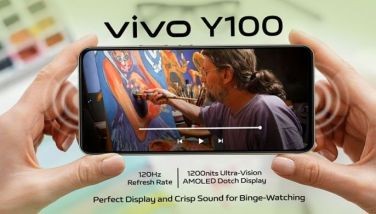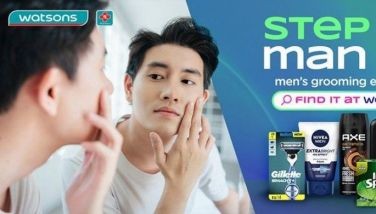A close look at eye care
Most of us can only look back to the days when we had 20-20 vision — when our eyesight was probably as good as the carrot-chomping Bugs Bunny’s. When we could read even the smallest print of an NBS best-seller without any help from a pair of specs and see the world ever so clearly!
But as we age, so do our eyes, becoming more and more prone to disease. Fact is, according to Dr. Harvey Uy, director for research and retina specialist at the Asian Eye Institute, “most eye diseases develop in old age because of the cumulative effects of oxidative stress and the loss of the ability of the eye to protect itself.”
The good doctor puts the focus on age-related macular degeneration (AMD), the leading cause of blindness in the elderly population. Although AMD may sound new to you and me, it is a very old disease. Simply put, it is a condition where the retina or the film in the back of the eye deteriorates. Its main risk factors are age (it’s a geriatric disease), smoking, lack of vitamin intake, genetics, obesity. It’s more common in females than males.
How do you know you have AMD?
“When you get AMD, your vision first gets wavy, straight lines become wavy,” Dr. Uy describes. “Later on, you begin to see a blind spot in the middle of your vision. This gets larger and larger. Eventually, there is a black hole in the middle of your vision. And you can only see out the size.”
Now that you know what it is and who will most likely get it, what can you do about it?
Dr. Uy prescribes, “You can lessen your chances of getting AMD by having a healthy lifestyle. This includes eating vegetables and fish; exercising; controlling your intake of fatty food; maintaining a normal blood pressure; and most importantly, taking sufficient amounts of vitamins.
Dr. Uy notes that large-scale studies done in the US have shown that taking beta-carotene (found in dark green and dark yellow vegetables and fruits), vitamins C, E, and zinc can significantly decrease your chances of losing your vision due to AMD.
Your daily eye vitamins should consist of: 5,000 units beta-carotene; 500 mg. vitamin C; 400 IU vitamin E, and 80 mg. zinc.
And then there’s lutein. Lu what? Lutein (technical name: carotenoid) is a naturally occurring plant pigment. A protector substance, it blocks out harmful radiation that can cause aging. The retina at the back of the eyes has a lot of lutein, which protects the eyes from light damage. Thus, you take lutein to protect your eyes from light damage.
And now, there’s a convenient, foolproof way of taking your eye vitamins with the Novartis products Vitalux and Vitalux Plus (multivitamins plus minerals), fixed combinations which already contain all the vitamins necessary to protect your eyes from aging. All it takes is to pop one to two tablets of Vitalux or Vitalux Plus (multivitamins plus minerals) daily and you’re good to go.
Yes, a daily intake of Vitalux and Vitalux Plus (multivitamins plus minerals) is enough to provide adequate amounts of vitamins to protect your eyes against the dreaded AMD. This wonder multivitamin provides the same high levels of antioxidants and zinc as in the AREDS (age-related eye disease study) formulation. You cannot get all these vitamins from healthy food alone. That will be a tall order. For instance, to get the same levels of zinc, you will have to eat two dozens of oysters every single day. That’s an awful lot of oysters to last you a lifetime! Then you have to eat several pounds of carrots to get the same amount of beta-carotene and several dozens of oranges to get the right amount of lutein.
But can AMD be treated?
The good news is, it can. For the milder dry type of AMD, you can lessen the chance of visual deterioration by taking adequate amounts of vitamins like Vitalux Plus (multivitamins plus minerals).
For the more severe wet type, while there’s no cure, you can prevent the disease from getting worse, or regain some vision, through laser treatment. “To improve the vision, we usually inject antibodies into the eyes such as Ranibizumab or Lucentis. Lucentis (Ranibizumab) has been shown to improve the vision of wet-type AMD patients. It is injected monthly into the eye. You inject it until the disease is arrested.”
With Lucentis, AMD is no longer a death sentence for your eyesight. Dr. Uy is happy to announce, “I think Lucentis (Ranibizumab) was the breakthrough drug for 2008. With the introduction of Lucentis (Ranibizumab) on the market, you can actually stop the worsening of your eyesight and even allow recovery for some eyesight.”
Want to know if you’re a candidate for AMD? Every week, test your vision using the Amsler Grid. Stop, look, and listen to this: Wearing your reading glasses (if you usually wear them), cover one eye, and hold the Amsler Grid at a comfortable reading distance. Look at the center dot and keep your vision on it at all times. Keeping your vision on the center, see how the lines look. Are they straight? Are the squares of equal size? If you notice that any part of the grid has become wavy, blurred, or otherwise changed for the worse since you last checked, contact your eye doctor immediately.
Look here, says Dr. Harvey Uy, if you want to have good eyesight throughout your life, live a healthy lifestyle, eat the right food, exercise, avoid sunlight, take adequate amounts of vitamins, and see your doctor regularly when you hit the age of 50. A lot of eye diseases start showing up at 50.
But surely, with clear eyesight and great peepers, you can be nifty at fifty.















